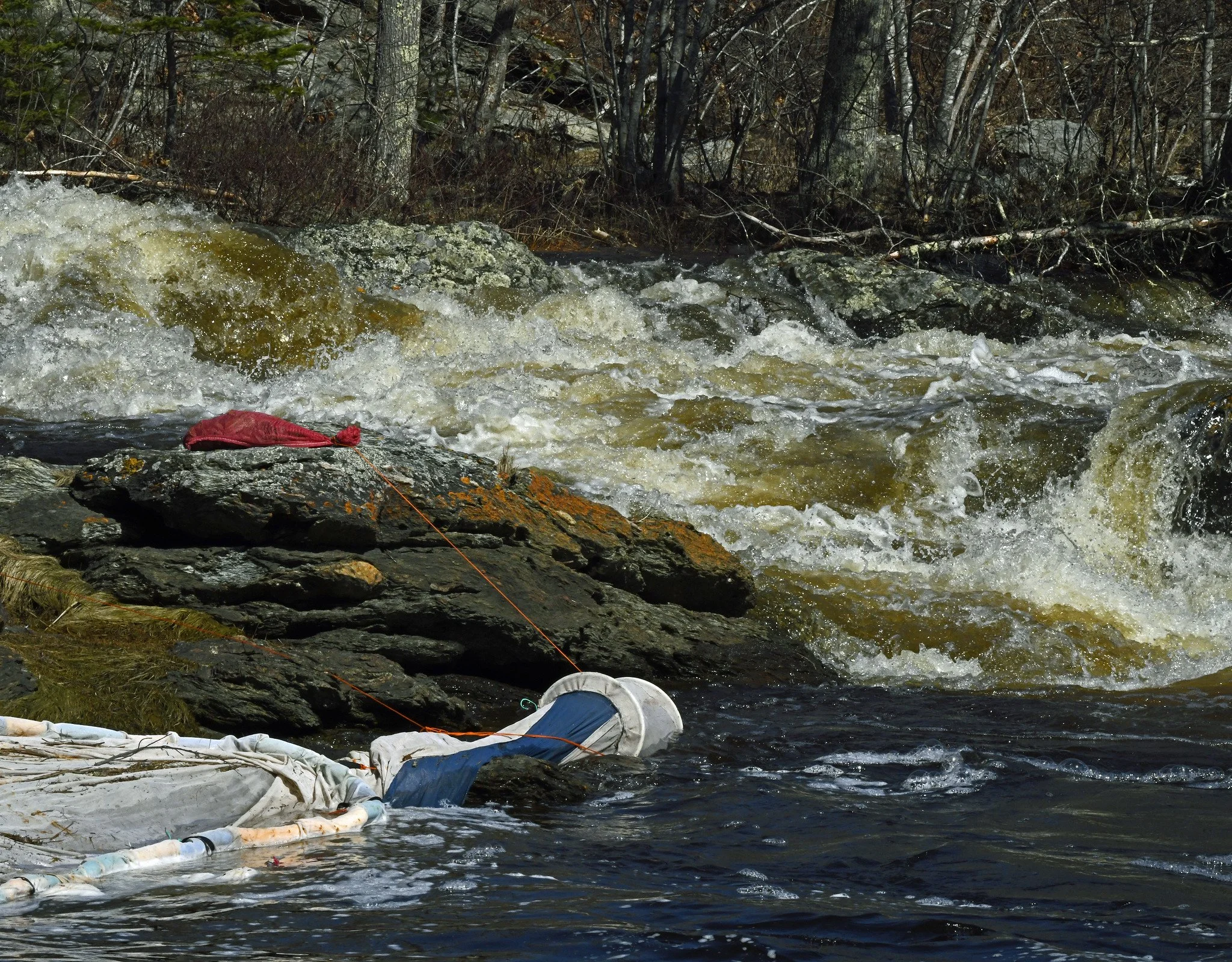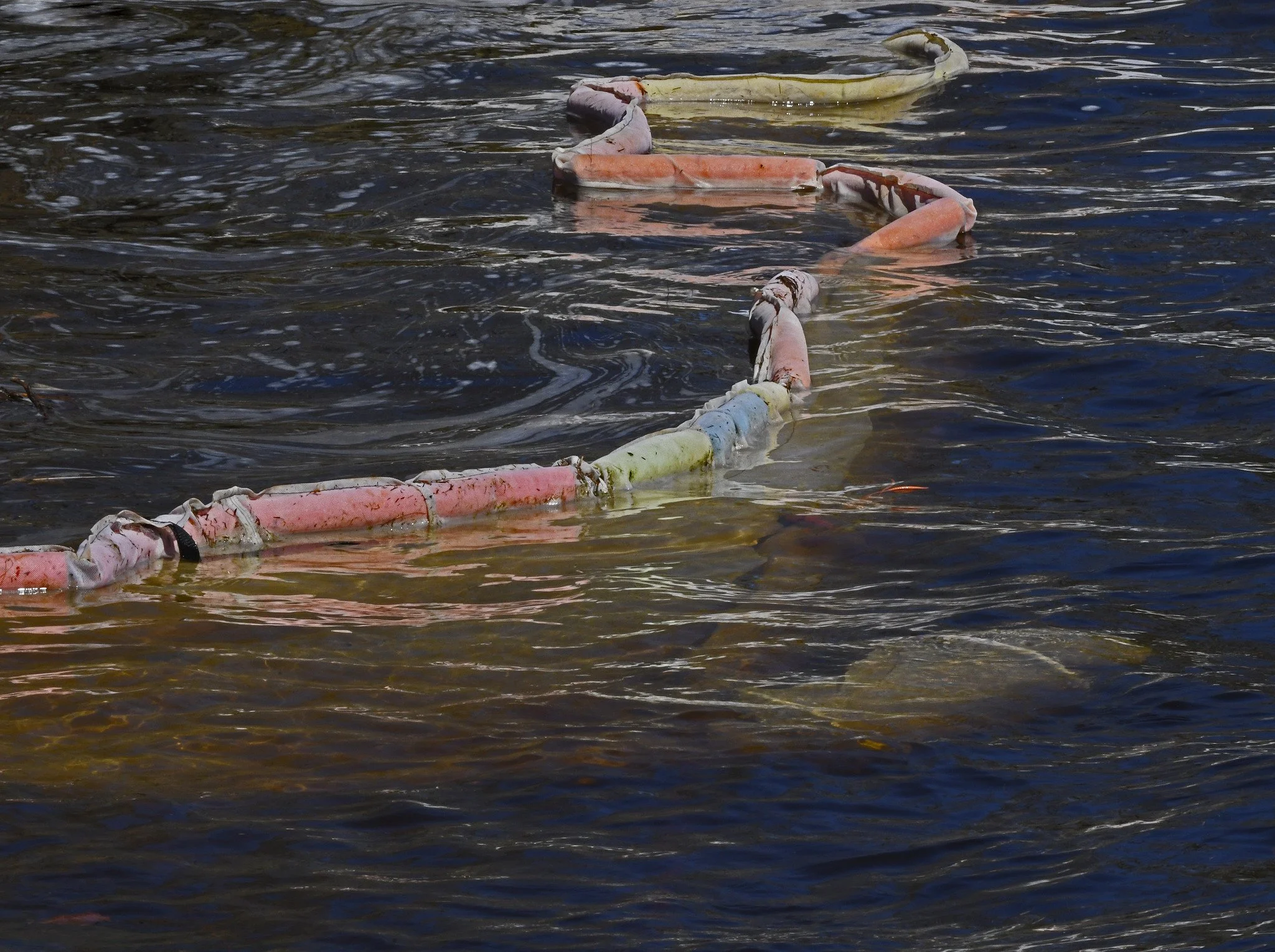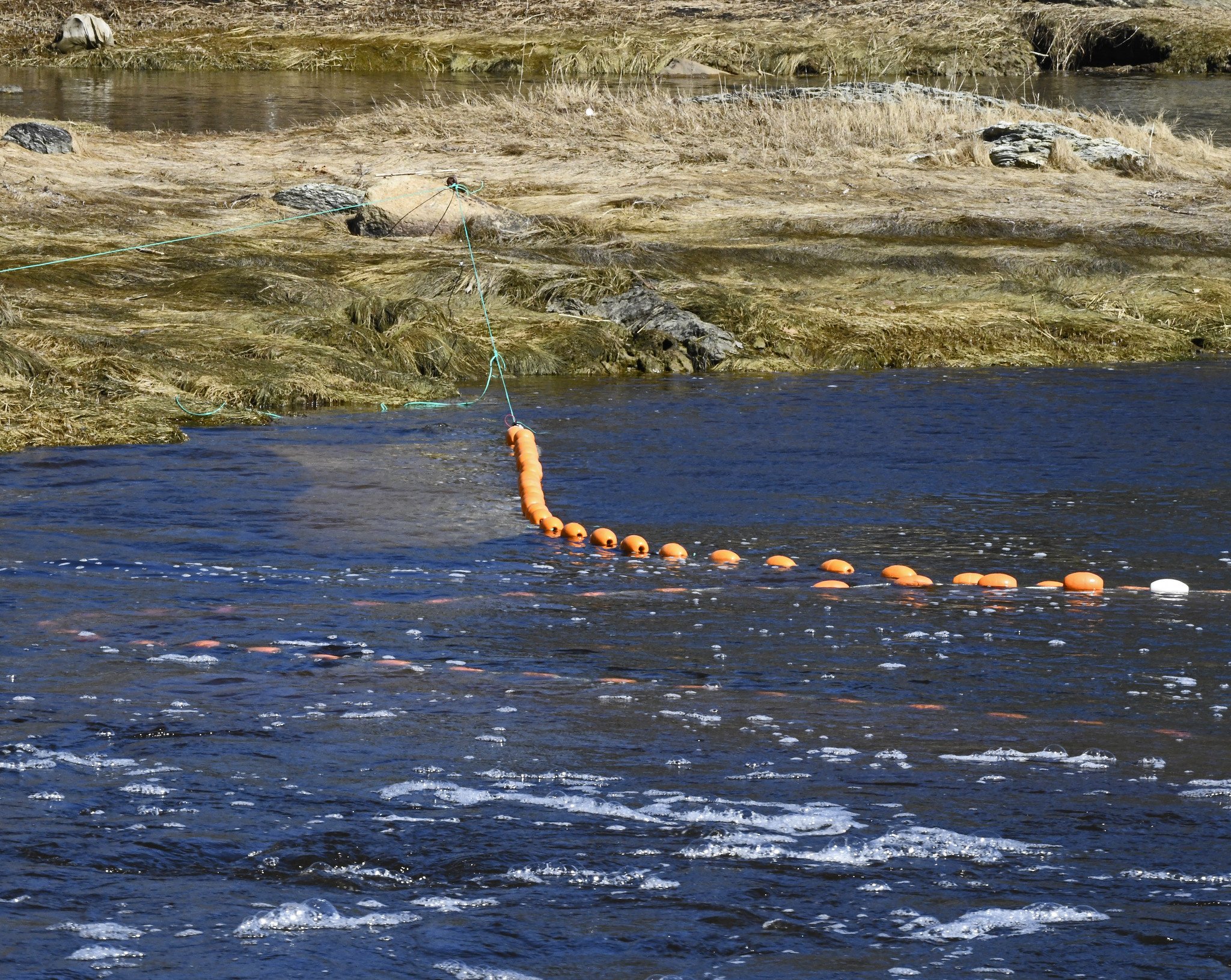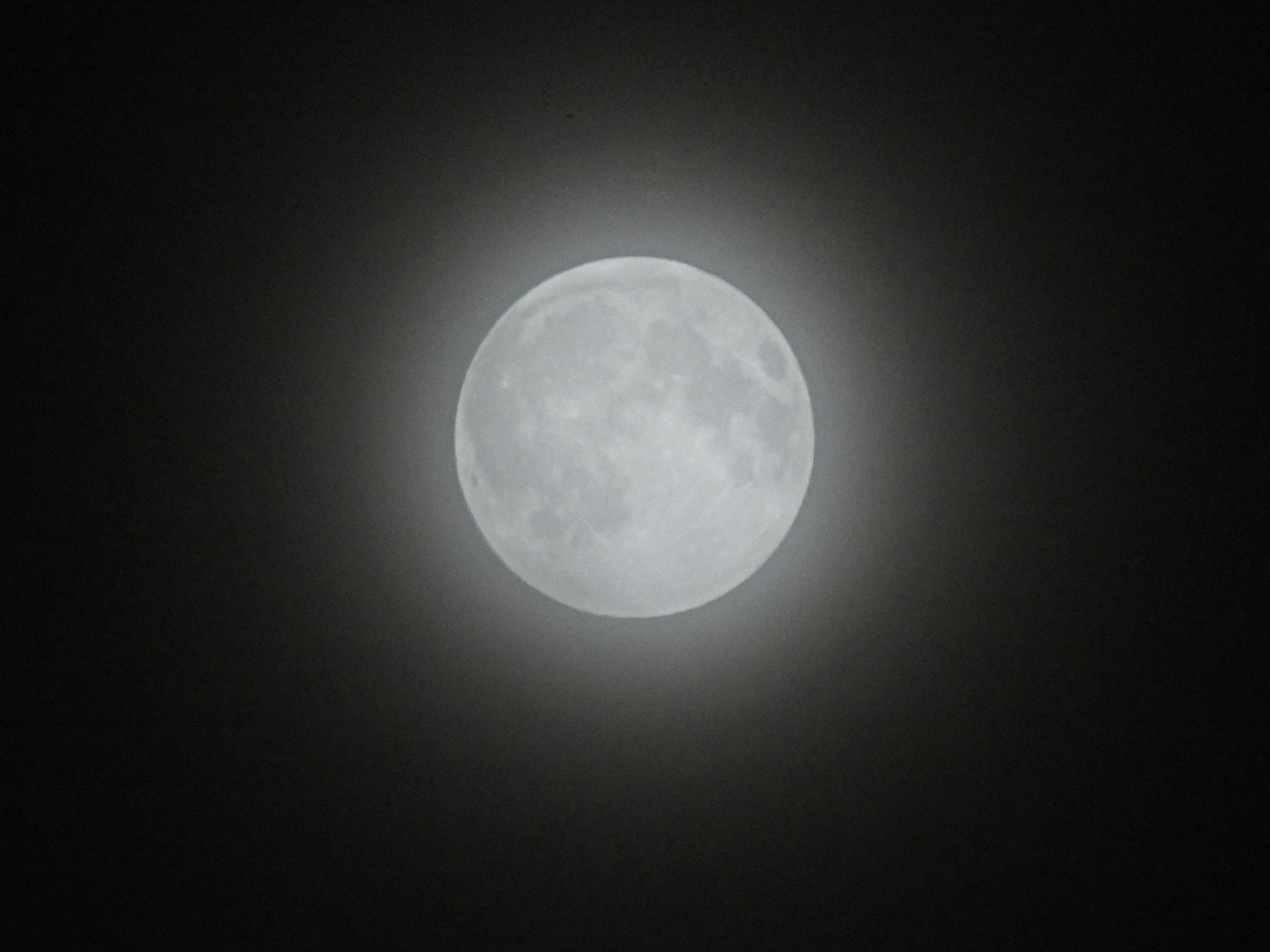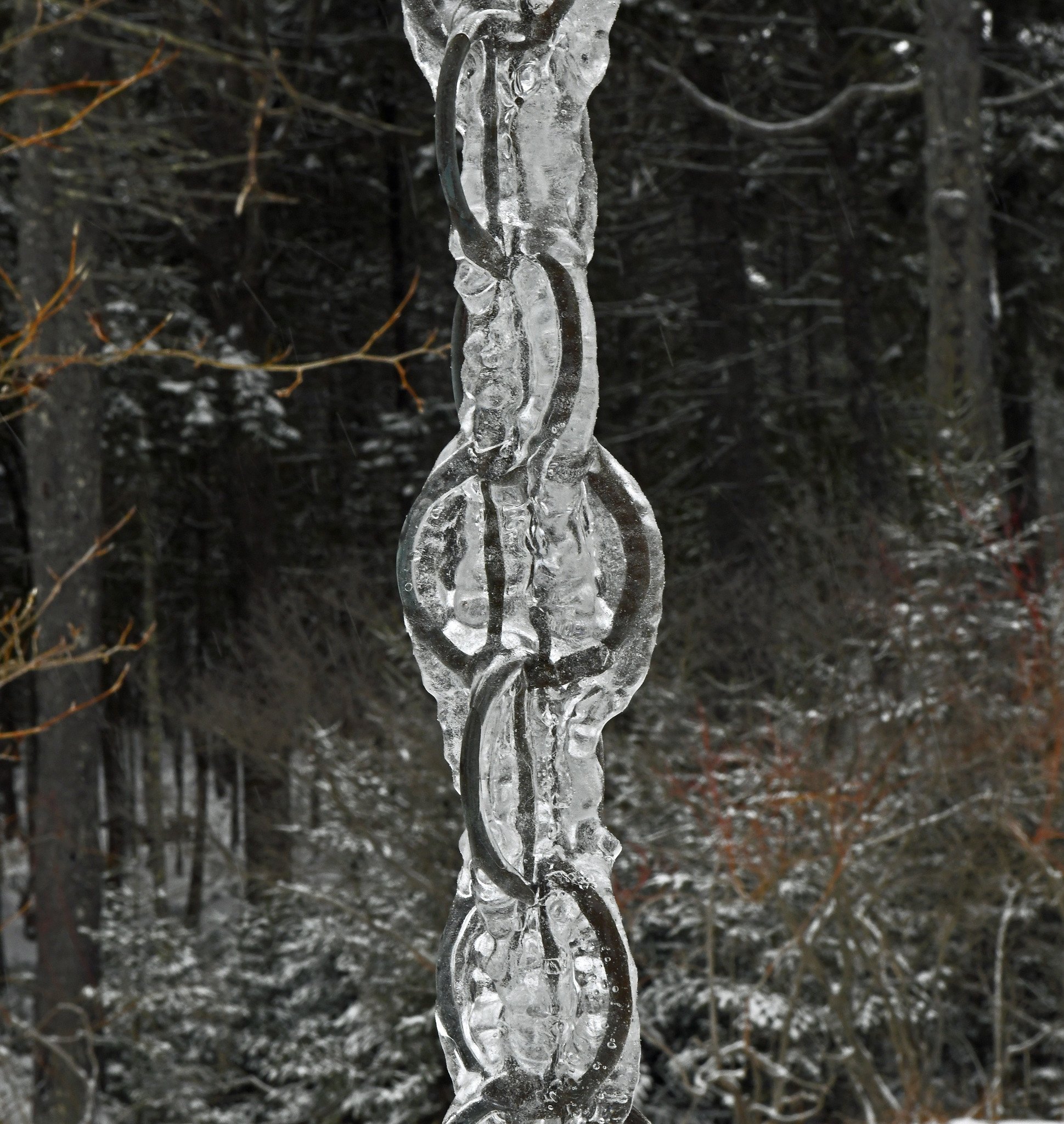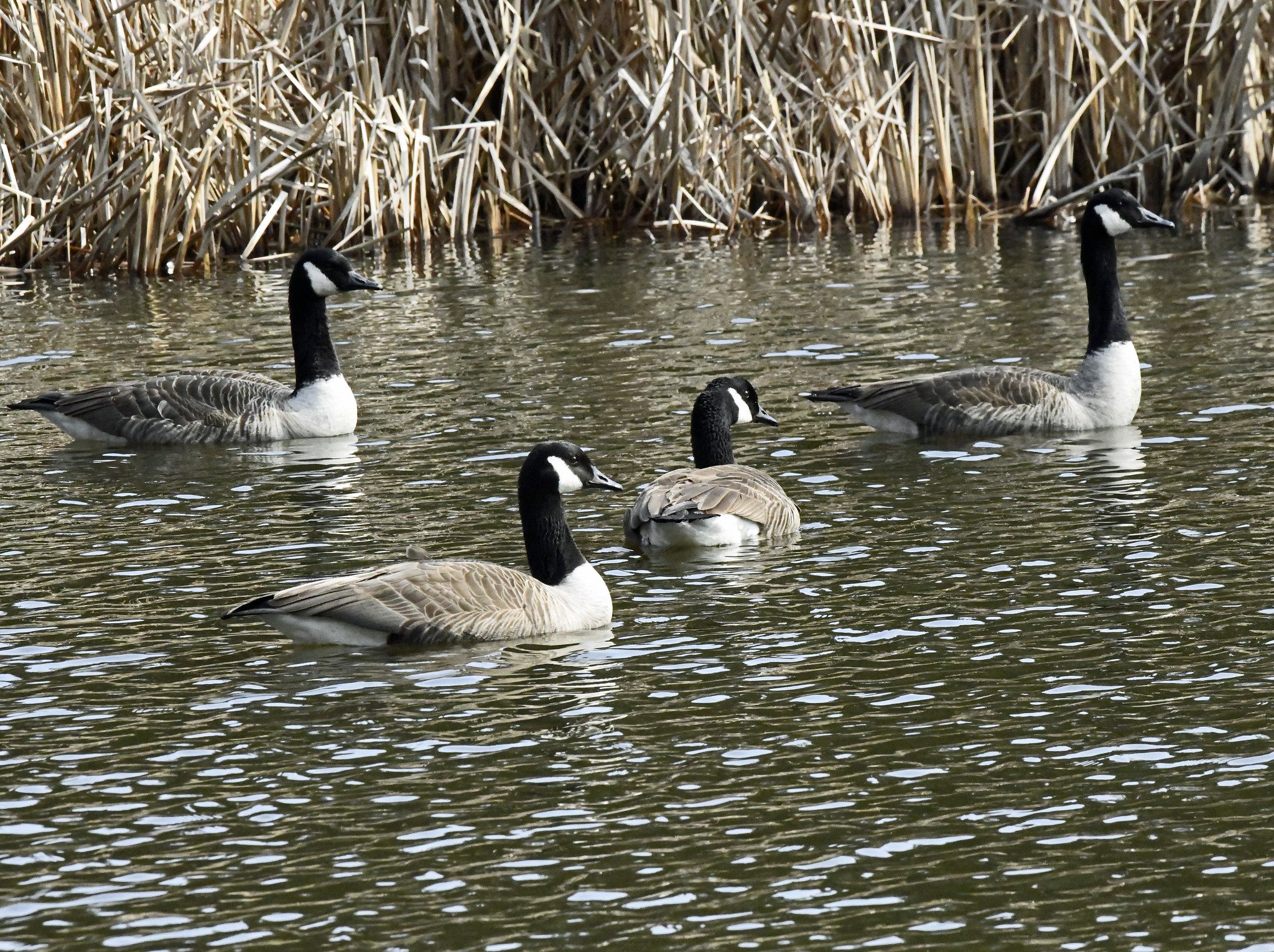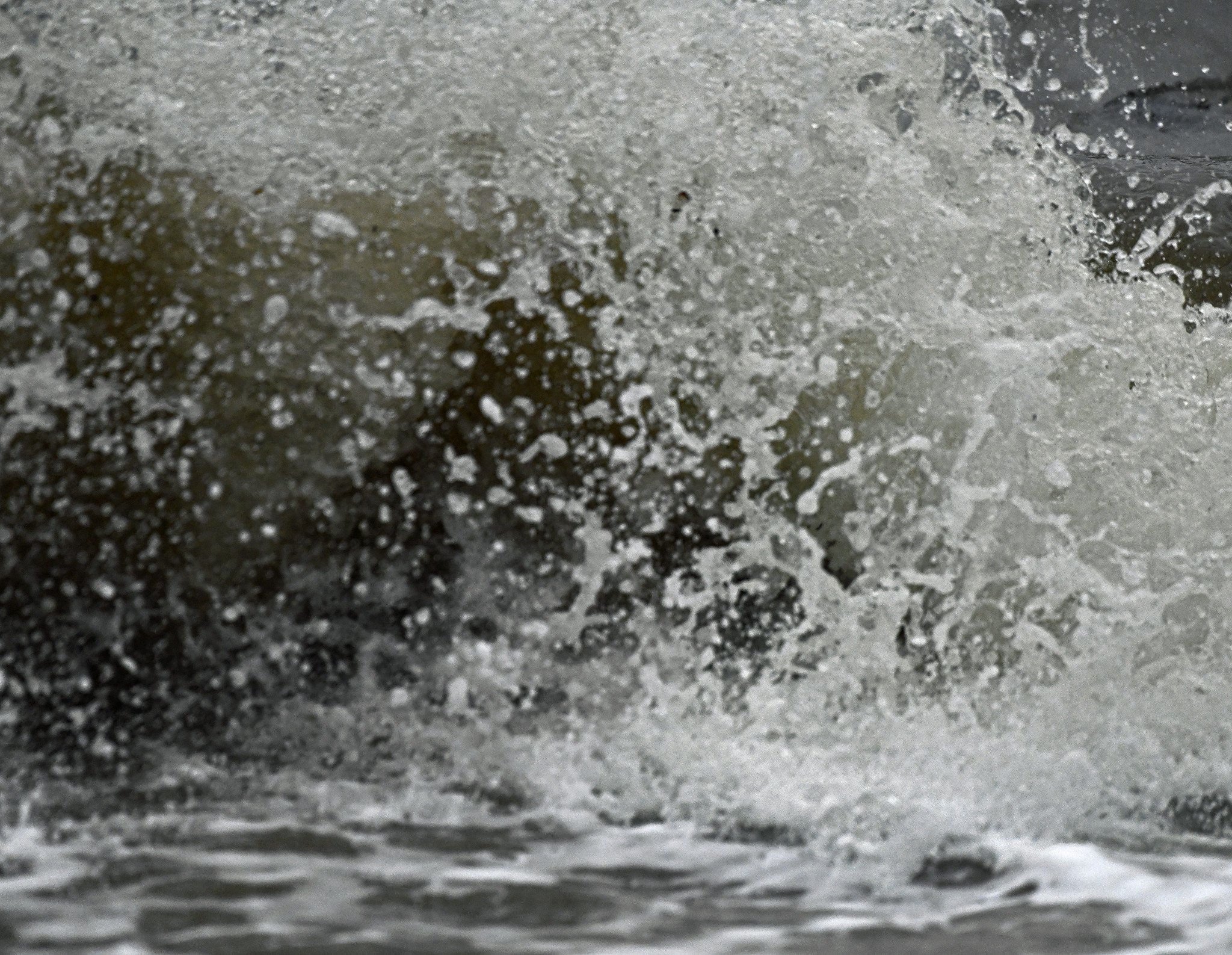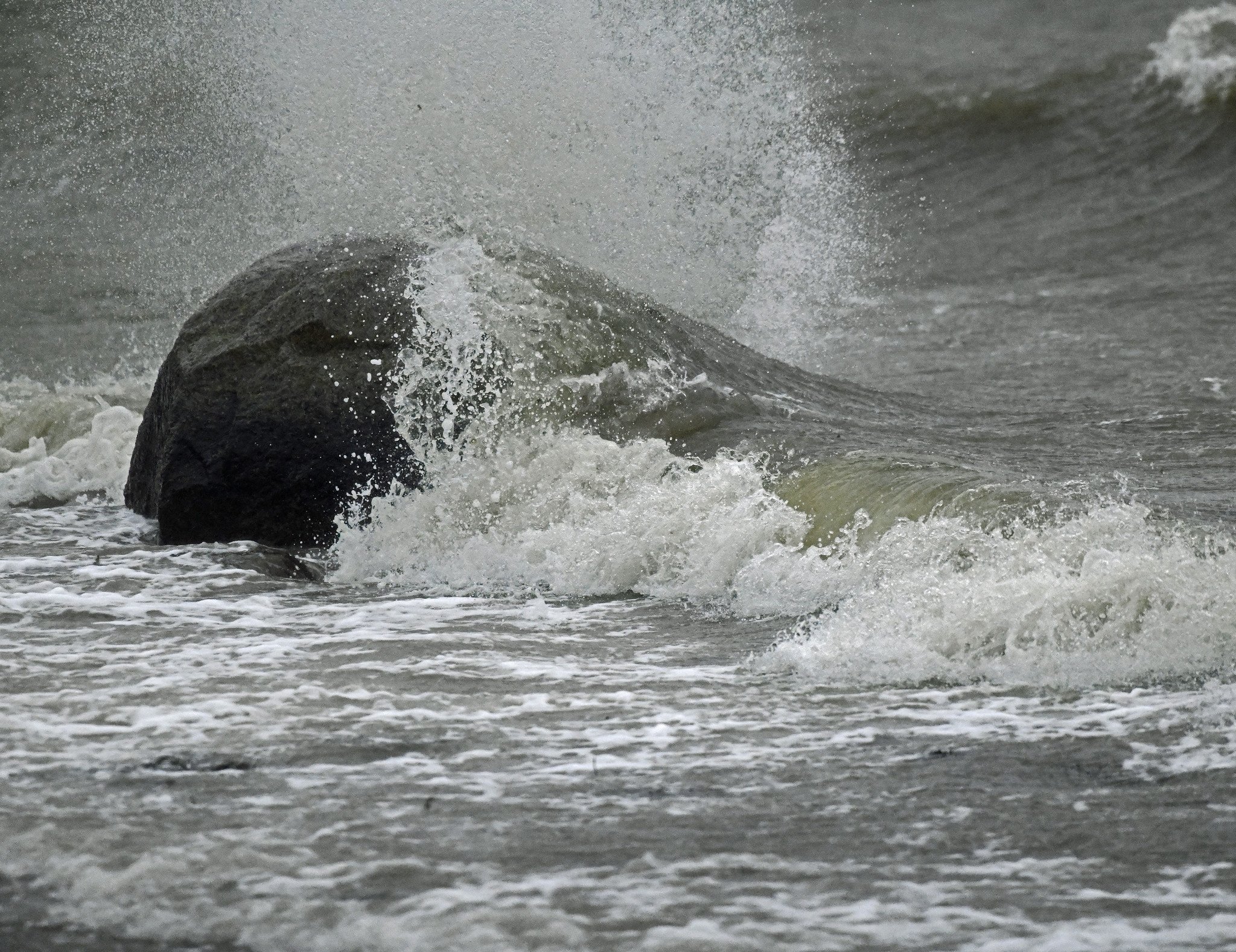The glass eel (aka elver) season opened last week and here you see Fyke nets set to catch them at the mouth of Patten Stream yesterday.
Fyke (usually pronounced “Fick”) nets are large, narrow-mesh funnels with a catch container at the end and floats along the top. They usually are set up in rivers, streams, and stream mouths that historically attract the migrating eels. Those set in deeper water often take on fascinating forms that seem alive in fast-moving water:
As you may know, glass eels are baby American eels (Anguilla rostrata) that are transparent except for their small eyes and spine. They’re born in the Sargasso Sea and migrate here in the spring to return to the ponds and other fresh waters that their parents inhabited after a similar trip. In a number of years, the non-transparent, matured eels in the United States will migrate back to the Sargasso to spawn and produce more glass eels to return here.
The three-inch glass eels are the state’s most valuable form of wildlife, if you judge value on the basis of cost per-pound. Since 2015, per-pound prices paid to the limited number of licensed fishermen of these transparent wrigglers have been over $2000, except for the Covid epidemic year of 2020. Most of them are shipped to Asia to be raised to adulthood and served as expensive delicacies there.
(Images taken in Surry, Maine, on March 30, 2024.)

